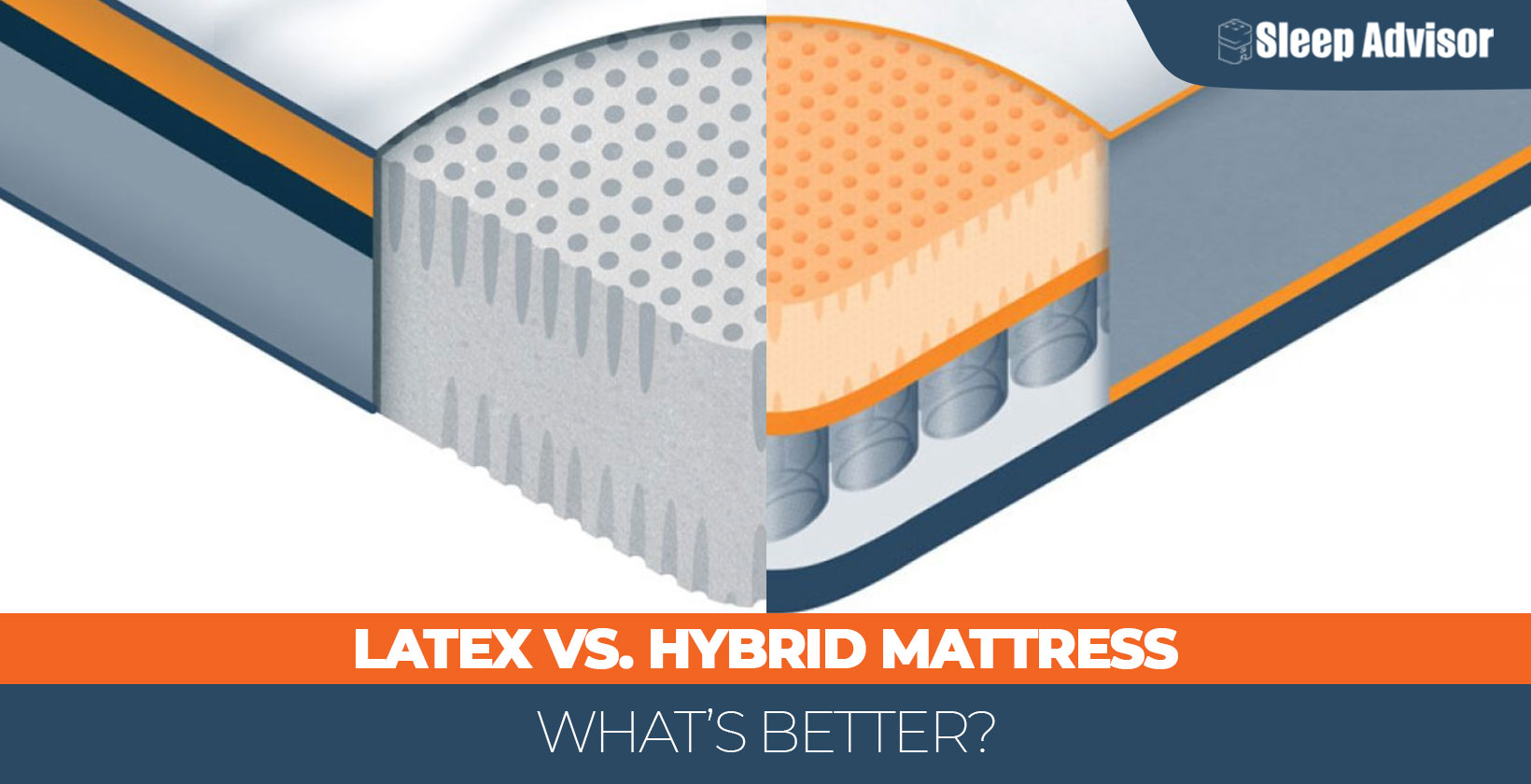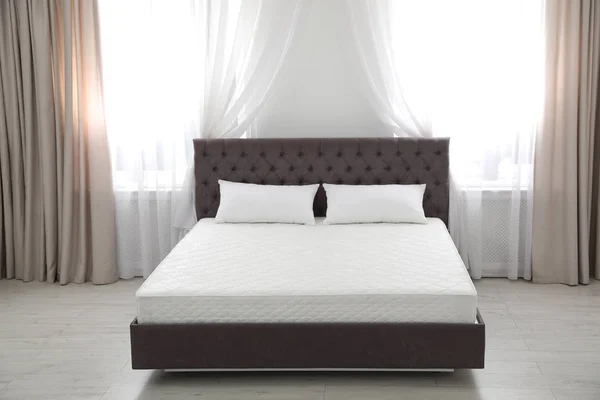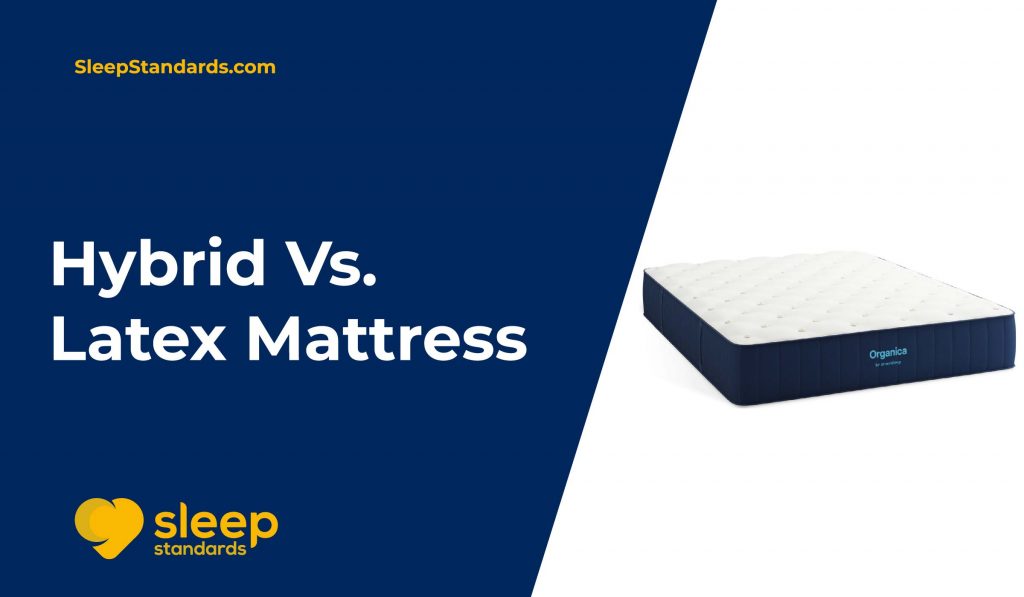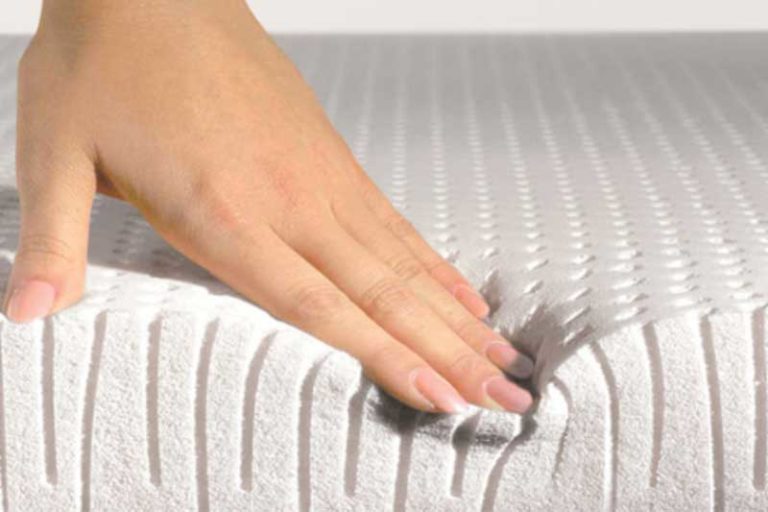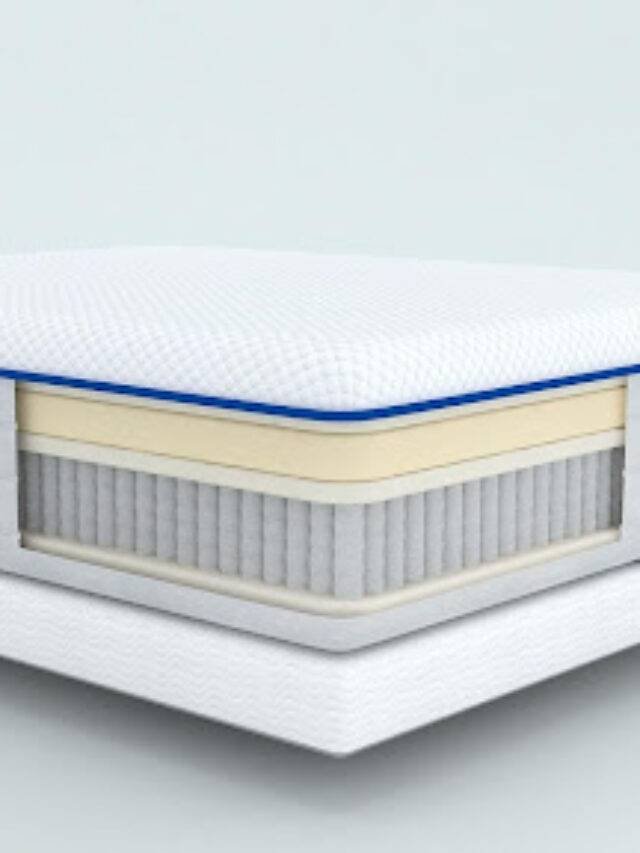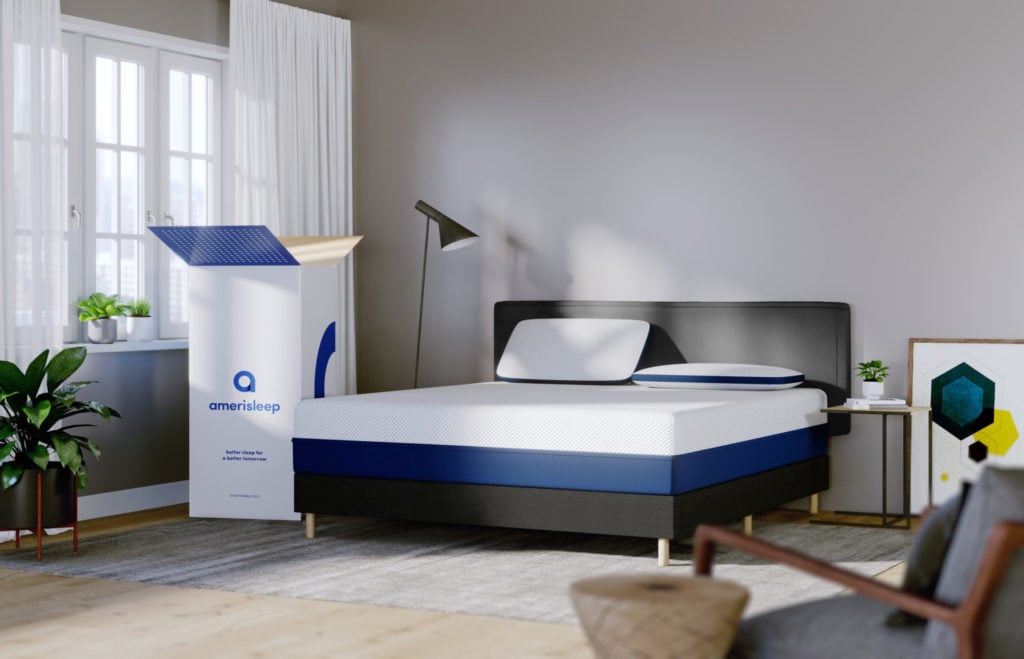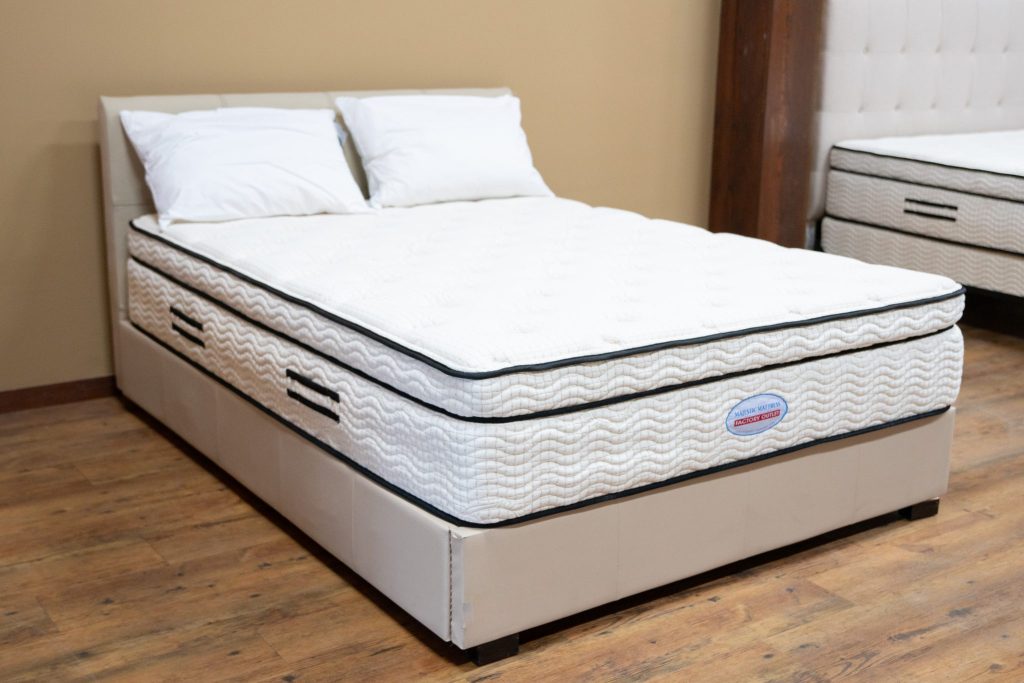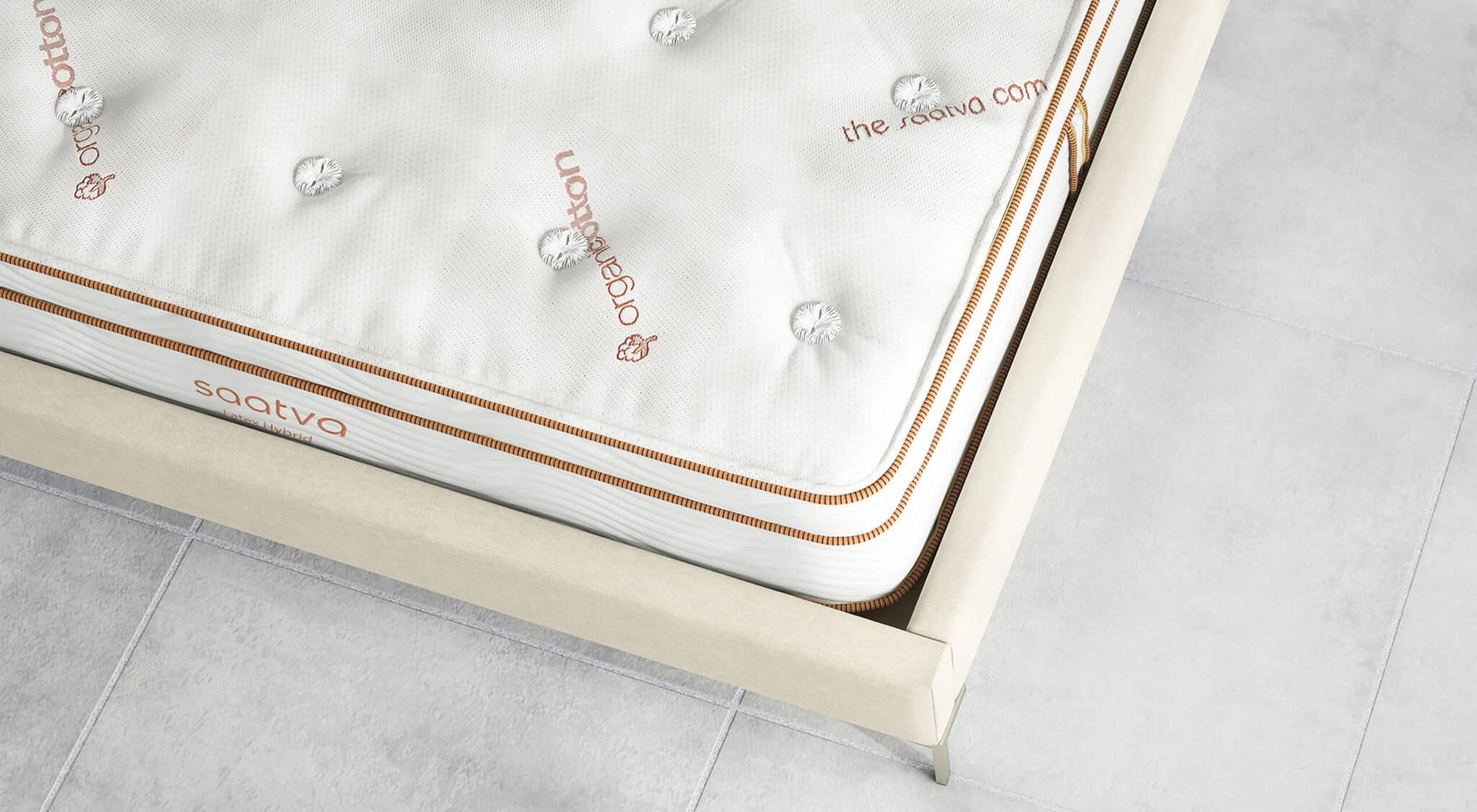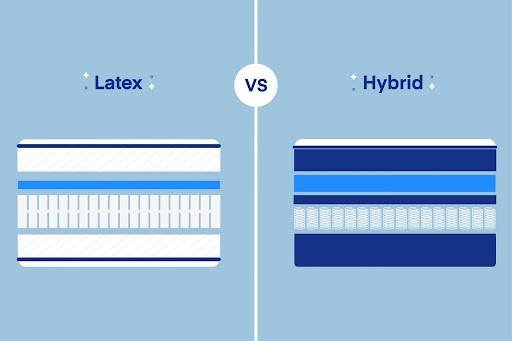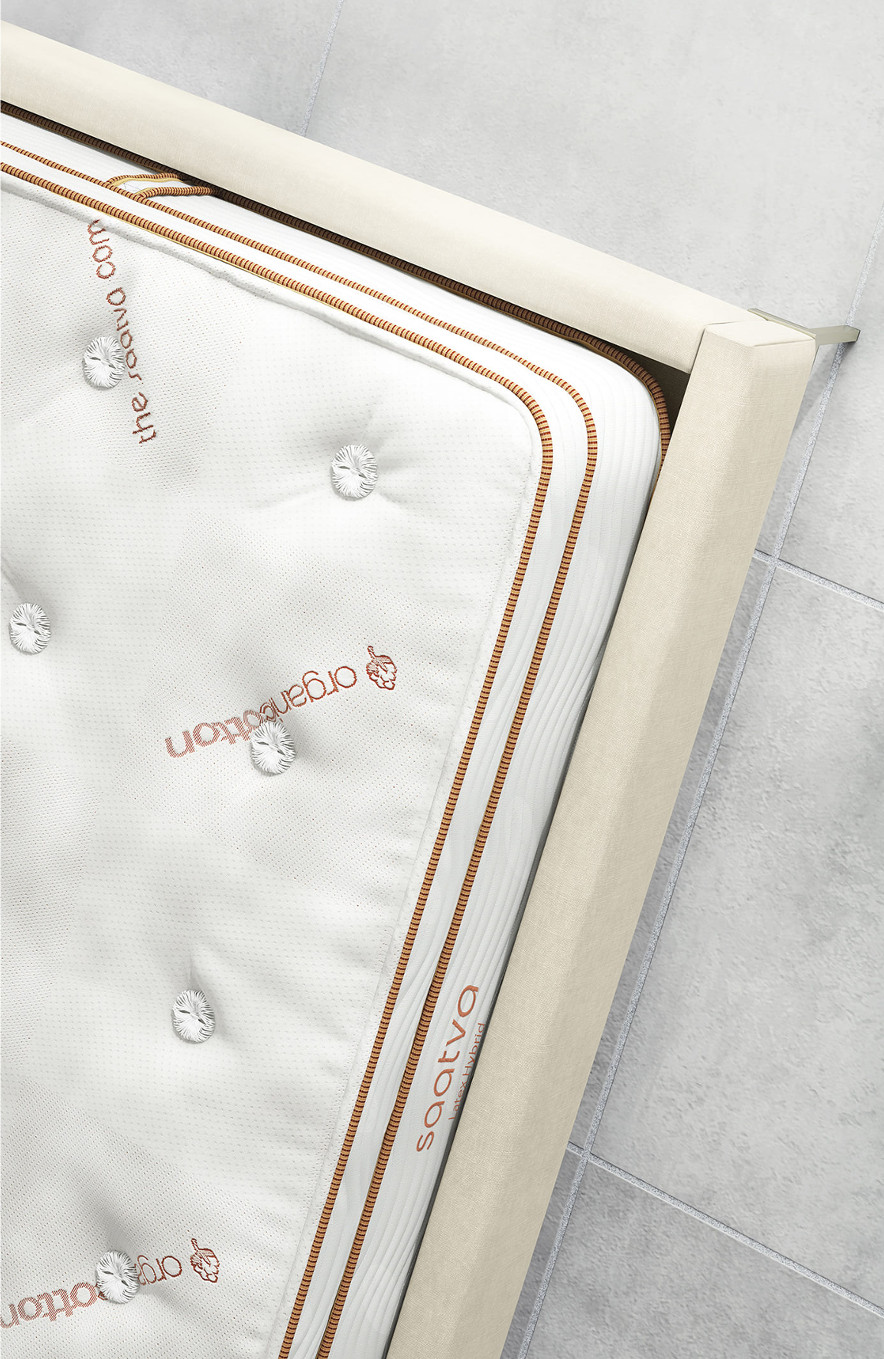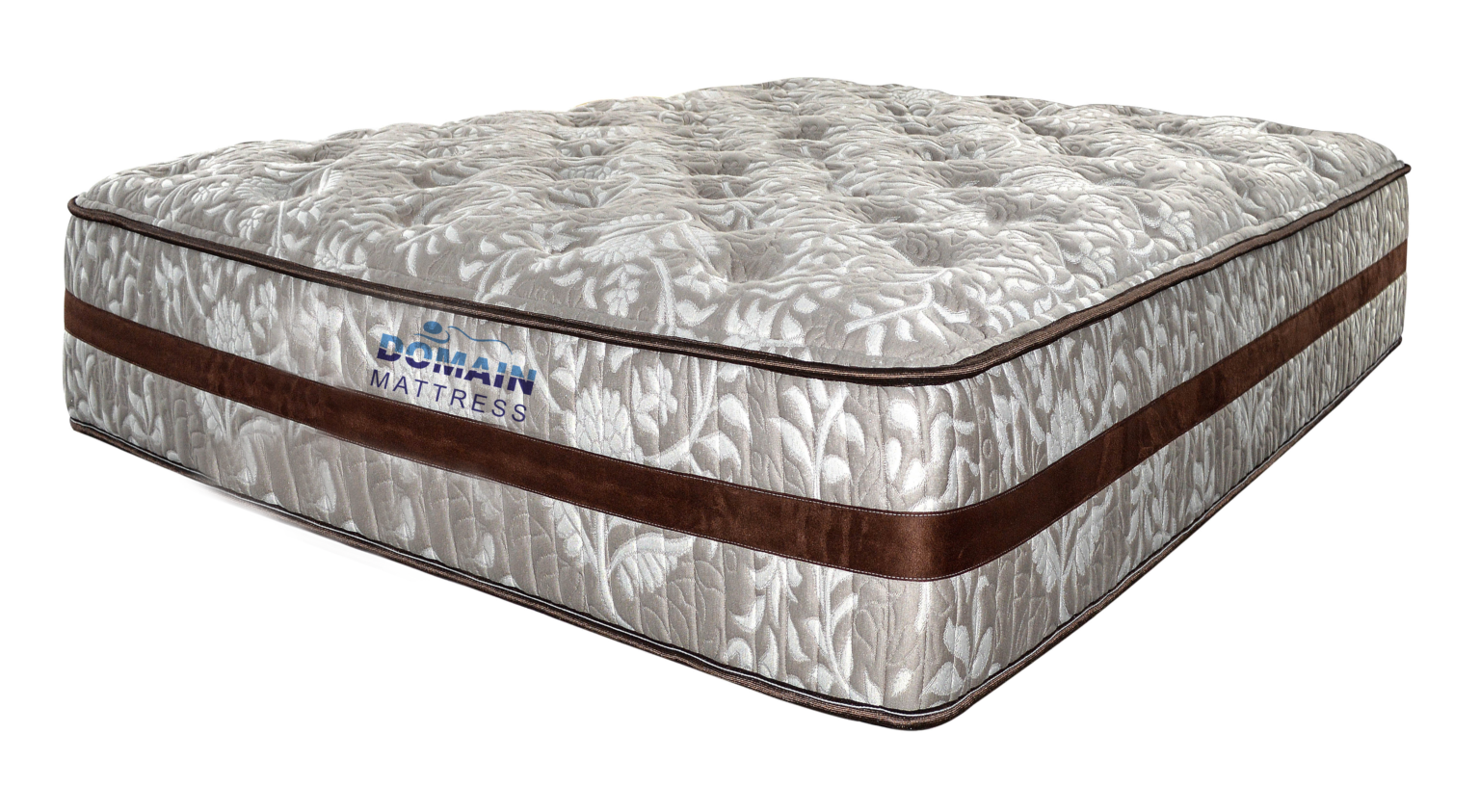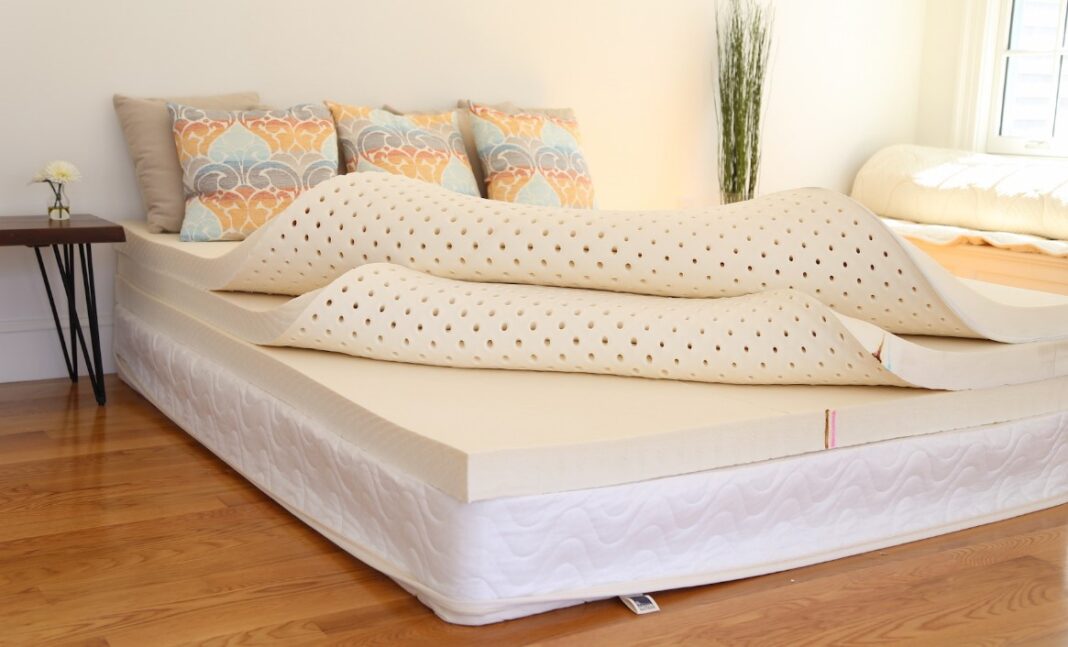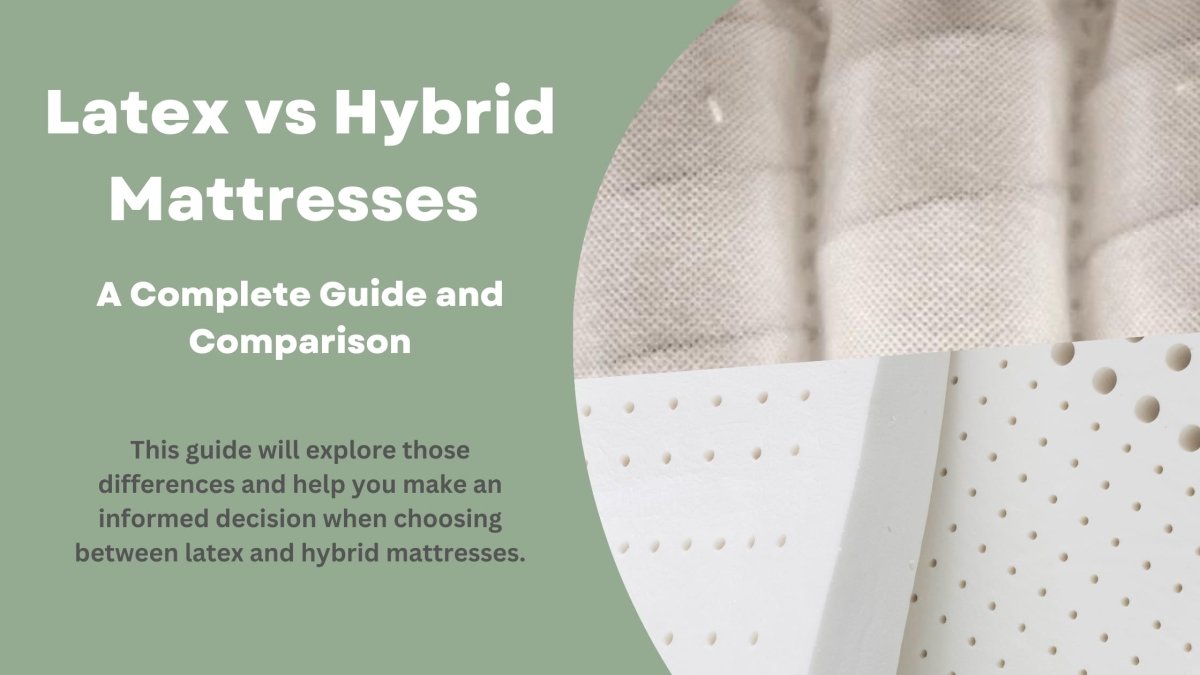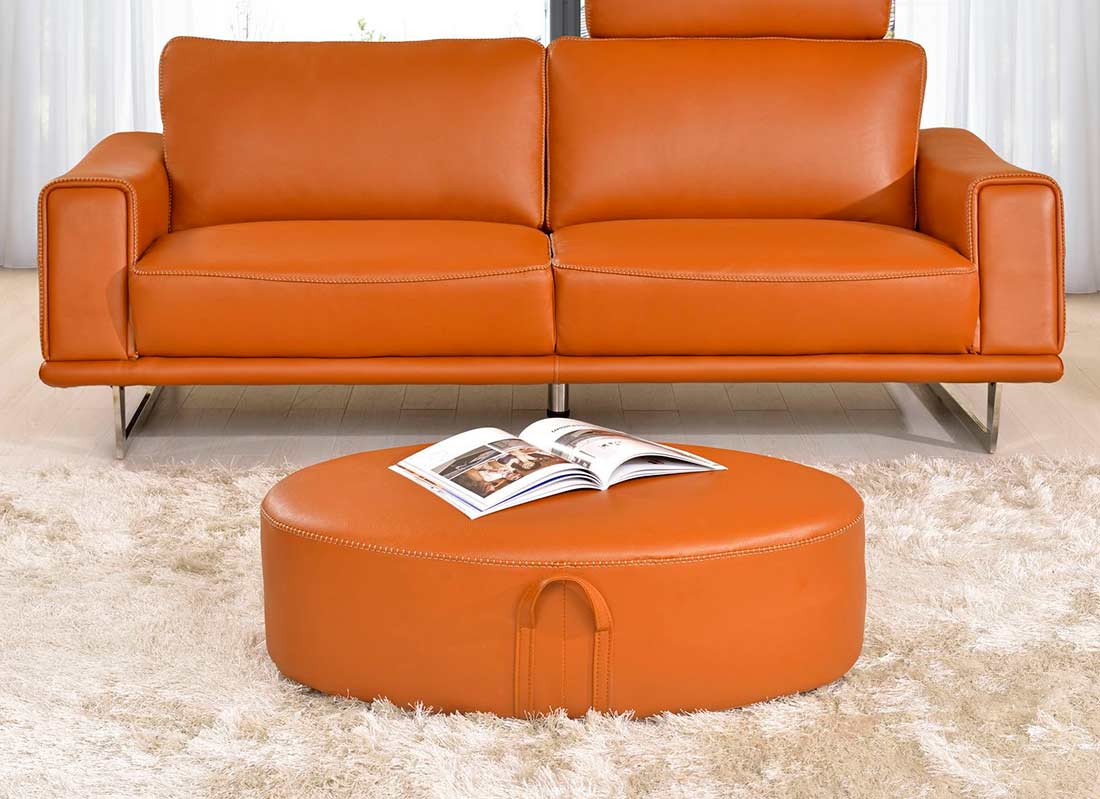Latex Mattress vs Hybrid Mattress: Which One is Right for You?
Choosing a new mattress can be overwhelming with so many options available on the market. Two popular options that often come up in the discussion are latex and hybrid mattresses. Both offer unique features and benefits, but which one is right for you? Let's dive into the details and help you make an informed decision.
Latex vs Hybrid Mattress: What's the Difference?
The main difference between a latex and hybrid mattress is the materials used in their construction. Latex mattresses are made from natural latex foam, which is derived from the sap of rubber trees. On the other hand, hybrid mattresses combine the support of traditional innerspring coils with layers of foam or latex for comfort.
Best Latex and Hybrid Mattresses of 2021
Before we dive into the pros and cons of each type, let's take a look at some of the best latex and hybrid mattresses of 2021. For latex mattresses, the PlushBeds Botanical Bliss and Avocado Green Mattress are top contenders. As for hybrid mattresses, the Saatva Classic and Helix Midnight are highly rated by customers.
Latex vs Hybrid Mattress: Pros and Cons
Let's start with the pros of latex mattresses. They are known for being hypoallergenic, eco-friendly, and durable. Latex mattresses also provide excellent support, pressure relief, and temperature regulation. On the other hand, hybrid mattresses offer a good balance of support and comfort, as well as motion isolation and edge support. However, they may not be as durable as latex mattresses and can be more expensive.
Latex vs Hybrid Mattress: Which One is Better for Back Pain?
If you suffer from back pain, both latex and hybrid mattresses can provide relief. Latex mattresses offer excellent support and pressure relief, which can alleviate back pain. Hybrid mattresses also offer good support and can contour to the body's natural curves, reducing pressure points. However, it's important to keep in mind that every person's body is different, so it's best to try out both types and see which one works better for you.
Latex vs Hybrid Mattress: Durability Comparison
When it comes to durability, latex mattresses have the upper hand. They are known to last longer than hybrid mattresses, with an average lifespan of 8-10 years. On the other hand, hybrid mattresses may start to show signs of wear and tear after 6-8 years. However, both types of mattresses can last longer with proper care and maintenance.
Latex vs Hybrid Mattress: Price Comparison
In terms of price, latex mattresses tend to be more expensive than hybrid mattresses. This is due to the high-quality materials used in their construction. However, the long lifespan of latex mattresses can make up for the initial investment. Hybrid mattresses, on the other hand, offer a more budget-friendly option without compromising on comfort and support.
Latex vs Hybrid Mattress: Comfort and Support Comparison
When it comes to comfort and support, both latex and hybrid mattresses have their strengths. Latex mattresses offer excellent support and pressure relief, making them a great option for those with back pain. They also have a responsive feel, meaning they can quickly adjust to your body movements. Hybrid mattresses, on the other hand, offer a good balance of support and comfort. They have a softer, more cushioned feel compared to latex mattresses.
Latex vs Hybrid Mattress: Motion Isolation Comparison
If you share your bed with a partner, you may be concerned about motion transfer. Latex mattresses have minimal motion transfer, meaning you won't be disturbed by your partner's movements. Hybrid mattresses also offer good motion isolation, thanks to the layers of foam or latex used in their construction.
Latex vs Hybrid Mattress: Cooling Features Comparison
Both latex and hybrid mattresses offer features to keep you cool throughout the night. Latex mattresses have natural cooling properties, allowing air to flow through the foam and regulate temperature. Hybrid mattresses also have good airflow, and some models even come with cooling gel-infused foam layers for extra heat dissipation.
The Battle of Latex vs. Hybrid Mattresses: Which One is Right for You?
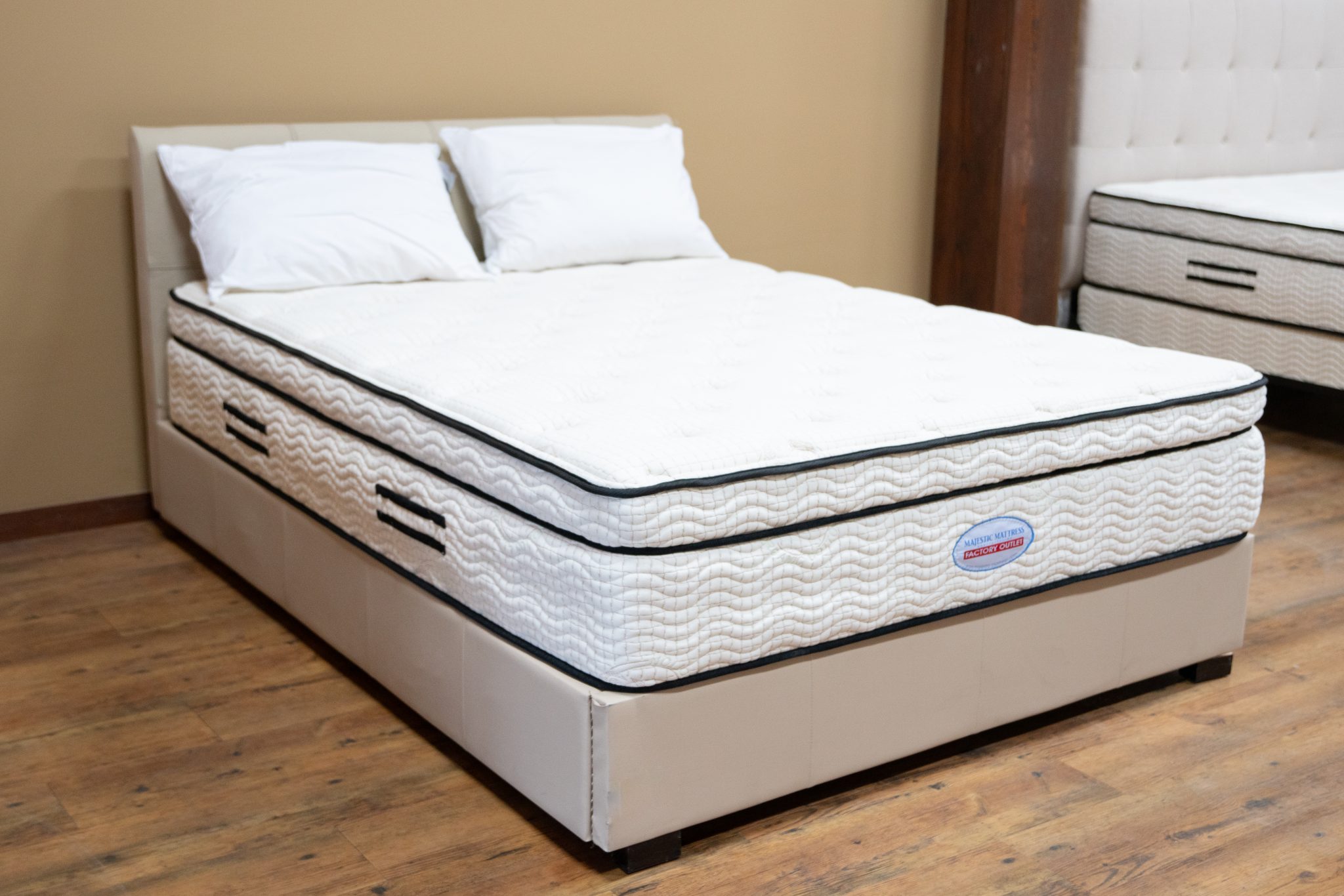
Unpacking the Debate
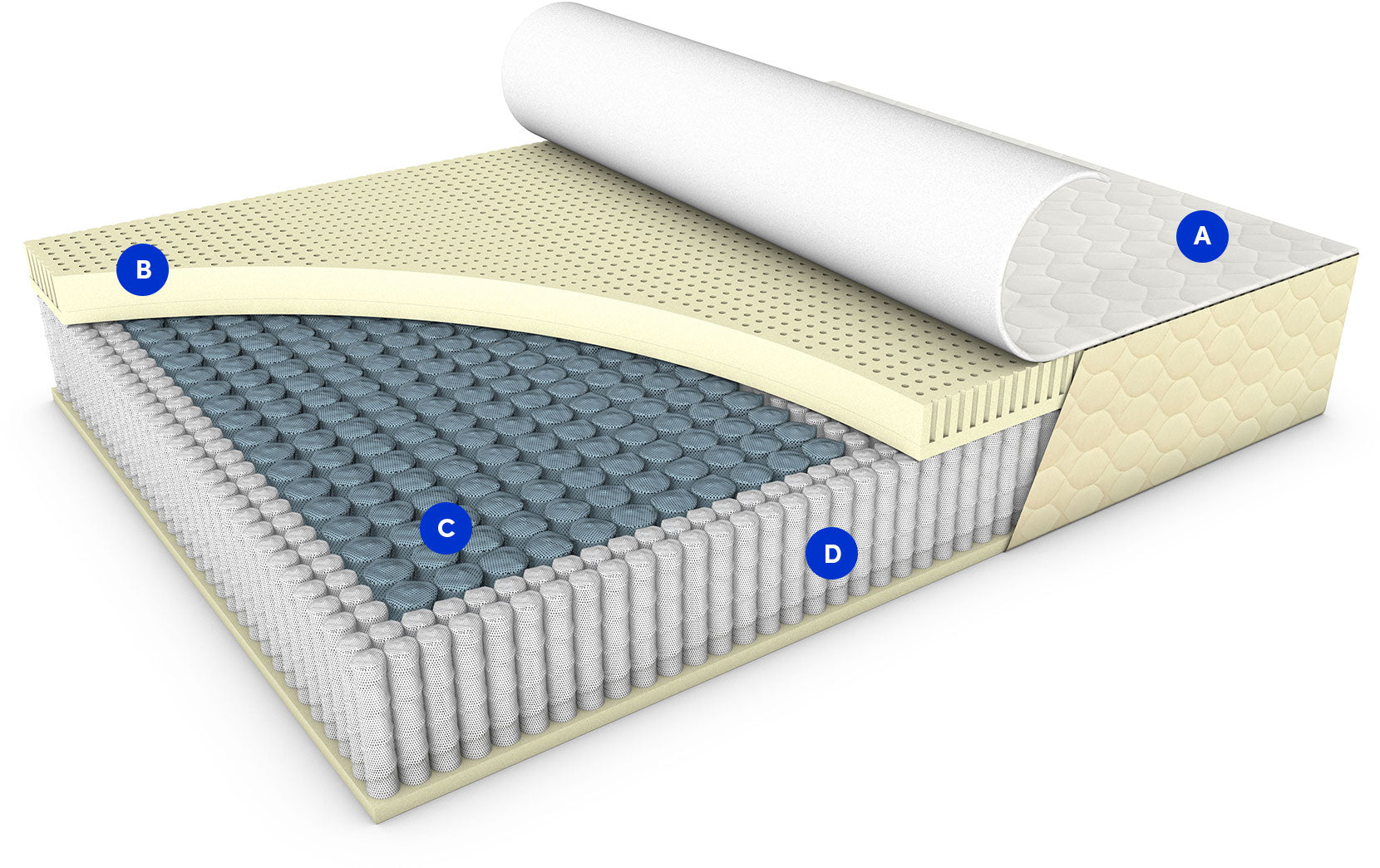 When it comes to choosing the right mattress for your home, the options can be overwhelming. With so many different types of mattresses on the market, it can be difficult to determine which one is the best fit for you. Two popular choices that often go head to head are
latex
and
hybrid
mattresses. Both offer unique benefits and features, making it a tough decision for homeowners. In this article, we'll dive into the key differences between these two types of mattresses and help you determine which one is the right choice for your sleep needs.
When it comes to choosing the right mattress for your home, the options can be overwhelming. With so many different types of mattresses on the market, it can be difficult to determine which one is the best fit for you. Two popular choices that often go head to head are
latex
and
hybrid
mattresses. Both offer unique benefits and features, making it a tough decision for homeowners. In this article, we'll dive into the key differences between these two types of mattresses and help you determine which one is the right choice for your sleep needs.
The Basics of Latex Mattresses
 A
latex mattress
is made from natural or synthetic rubber, which provides a responsive and supportive sleep surface. The latex material is known for its durability, as it can last up to 15 years. It also has a unique bounce that allows for easy movement and repositioning during the night. Latex mattresses come in different firmness levels, making them suitable for a wide range of sleep preferences.
A
latex mattress
is made from natural or synthetic rubber, which provides a responsive and supportive sleep surface. The latex material is known for its durability, as it can last up to 15 years. It also has a unique bounce that allows for easy movement and repositioning during the night. Latex mattresses come in different firmness levels, making them suitable for a wide range of sleep preferences.
The Ins and Outs of Hybrid Mattresses
 On the other hand,
hybrid mattresses
combine the support of traditional innerspring mattresses with the comfort of foam or latex layers. These mattresses usually have a core of pocketed coils, topped with layers of memory foam, latex, or other materials. The combination of materials provides the benefits of both worlds, giving sleepers the support they need while also contouring to their body for pressure relief.
On the other hand,
hybrid mattresses
combine the support of traditional innerspring mattresses with the comfort of foam or latex layers. These mattresses usually have a core of pocketed coils, topped with layers of memory foam, latex, or other materials. The combination of materials provides the benefits of both worlds, giving sleepers the support they need while also contouring to their body for pressure relief.
The Key Differences
 One of the main differences between latex and hybrid mattresses is their construction. While both offer support and comfort, latex mattresses have a more responsive and bouncy feel, while hybrid mattresses have a softer and contouring feel. Another difference is the natural materials used in latex mattresses, making them a more eco-friendly option. However, hybrid mattresses may have better motion isolation due to the foam or latex layers, making them a great choice for couples or light sleepers.
One of the main differences between latex and hybrid mattresses is their construction. While both offer support and comfort, latex mattresses have a more responsive and bouncy feel, while hybrid mattresses have a softer and contouring feel. Another difference is the natural materials used in latex mattresses, making them a more eco-friendly option. However, hybrid mattresses may have better motion isolation due to the foam or latex layers, making them a great choice for couples or light sleepers.
So, Which One is Right for You?
 Ultimately, the decision between a latex or hybrid mattress will come down to personal preference. If you prefer a bouncier and more responsive feel, a latex mattress may be the way to go. However, if you want a softer and more contouring experience, a hybrid mattress may be the better choice. Consider your sleep needs and try out both options to see which one feels more comfortable for you.
In conclusion, both latex and hybrid mattresses are excellent choices for a good night's sleep. They offer unique features that cater to different sleep preferences and can provide the support and comfort needed for a restful sleep. Take the time to research and try out both options to determine which one is the perfect fit for your needs and budget. Your mattress is an investment in your sleep and well-being, so choose wisely.
Ultimately, the decision between a latex or hybrid mattress will come down to personal preference. If you prefer a bouncier and more responsive feel, a latex mattress may be the way to go. However, if you want a softer and more contouring experience, a hybrid mattress may be the better choice. Consider your sleep needs and try out both options to see which one feels more comfortable for you.
In conclusion, both latex and hybrid mattresses are excellent choices for a good night's sleep. They offer unique features that cater to different sleep preferences and can provide the support and comfort needed for a restful sleep. Take the time to research and try out both options to determine which one is the perfect fit for your needs and budget. Your mattress is an investment in your sleep and well-being, so choose wisely.




